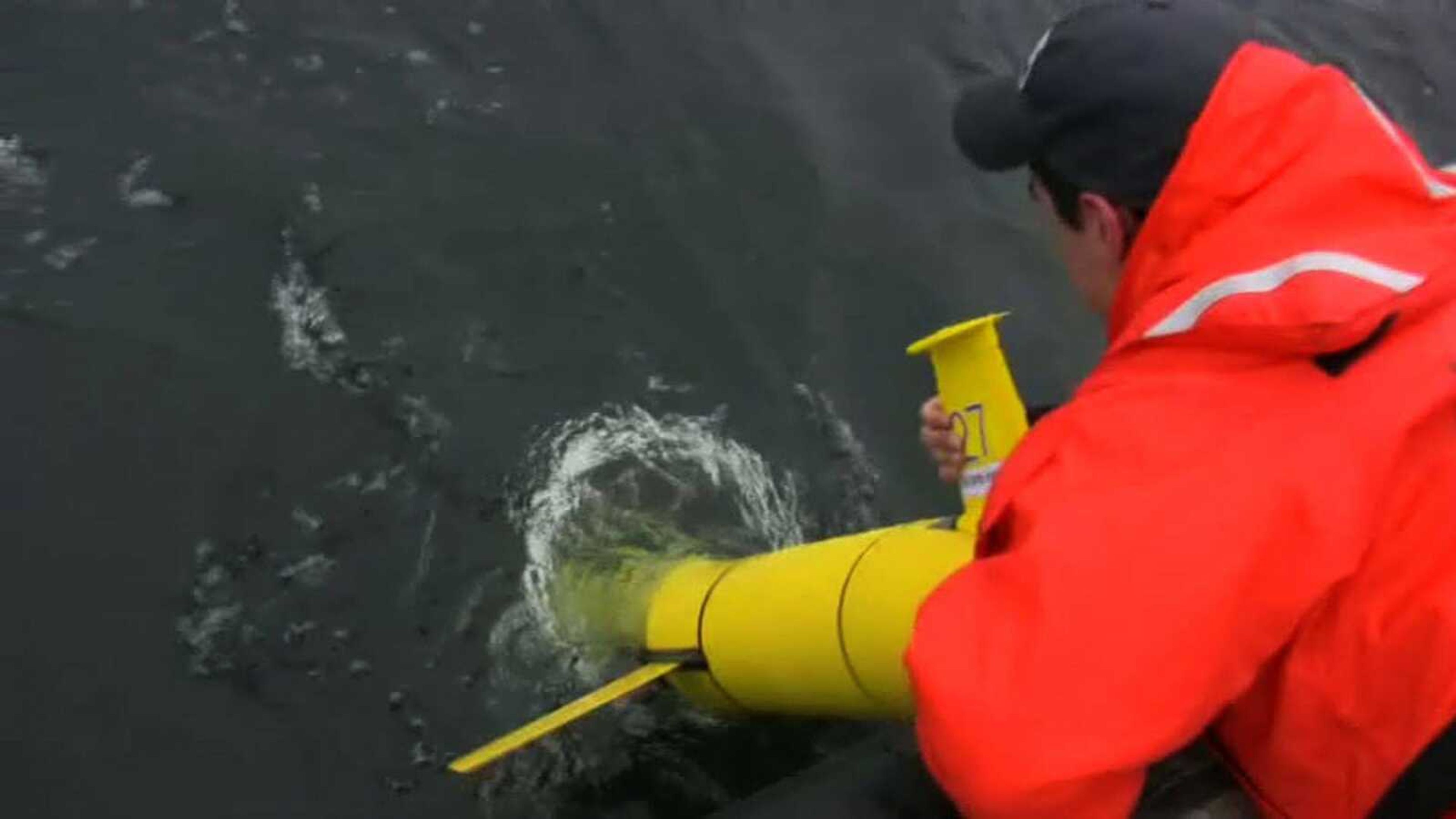Yellow submarine set to try again to glide across ocean
WASHINGTON -- A second try is about to get underway at sending a little yellow submarine gliding across the Atlantic Ocean to collect scientific data from beneath the waves. "The launching is tremendously exciting because there is just so much that we don't really know about what happens in the oceans," said Jane Lubchenco, head of the National Oceanic and Atmospheric Administration...
WASHINGTON -- A second try is about to get underway at sending a little yellow submarine gliding across the Atlantic Ocean to collect scientific data from beneath the waves.
"The launching is tremendously exciting because there is just so much that we don't really know about what happens in the oceans," said Jane Lubchenco, head of the National Oceanic and Atmospheric Administration.
"The capacity to fly through the ocean, across the Atlantic, taking data about temperature, salinity and other properties of the water gives us keen insight into what's happening down there," she said in a telephone interview.
The first glider was lost last year before it completed its trip. The second, improved version has been put together by the same team at Rutgers University in New Brunswick, N.J. If conditions cooperate, the launch is set for Wednesday -- Earth Day.
Rutgers professor Scott Glenn, who is leading the glider project, points out that Earth is the ocean planet.
Unmanned and without a motor, the glider can rise and dive, seeking out currents that will carry it along without worrying about refueling. Whenever it comes to the surface, it radios its findings back to the scientists.
"The ocean plays such a critical role in the dynamics of the climate system, having a better understanding of what's happening in real time is invaluable information," Lubchenco said.
"We're beginning to be able to infer much about the kinds of plants and animals and microbes that may be present from some of the kinds of data that the glider will be taking," she said.
Glenn said the device will be able to take a daily profile of water conditions and maneuver, directed by radio messages from student researchers. "If we can do it with one, we can do it with 10," he said, and then with more, and that will make an impact on forecasting ocean conditions.
"That's important because the ocean is very important for climate change and it is undersampled," said Glenn, co-director of the Mid-Atlantic Regional Coastal Ocean Observing System.
And the robots can be sent into hurricanes and into Arctic and Antarctic conditions.
"If you lose them it's sad, but it's just wires, you can build another one. These are the things that we can take risks with," he said. "We're doing some risk taking here that will benefit the entire scientific community."
The glider has been improved with new software, a new surface that scientists hope will discourage marine organisms from attaching to, and the ability to dive as deep as 660 feet, farther than the first version. The glider has been reinforced to resist bites from creatures such as sharks.
The glider is part of the Integrated Ocean Observing System, a project to collect and use ocean information continuously covering oceans, coastal waters and Great Lakes.
"Oceans are vital to all of life on earth. A billion people a day depend on seafood for their primary or sole source of protein, oceans drive the climate system, oceans provide most of the oxygen that we breathe," Lubchenco said.
"They provide wonderful places for recreation, they are an important source of jobs, livelihoods. Just within the U.S., half of Americans live in coastal areas and 60 percent of gross domestic product comes from coastal areas, so clearly they are an integral part of our very fabric. Yet we know precious little about them," she said.
"We're constructing a vast, three dimensional jigsaw puzzle," Lubchenco said. "We have bits and pieces of the puzzle and we're building out from that. So every track that this glider makes, every new sensor that we have in the oceans" provides data to construct a more meaningful and dynamic picture of the world, she said.
"We have only just begun to tap the potential that is here on planet ocean."
---
On the Net:
NOAA: http://www.noaa.gov
Integrated Ocean Observing System: http://ioos.noaa.gov
Mid-Atlantic Regional Coastal Ocean Observing System: http://marine.rutgers.edu/marcoos/
Connect with the Southeast Missourian Newsroom:
For corrections to this story or other insights for the editor, click here. To submit a letter to the editor, click here. To learn about the Southeast Missourian’s AI Policy, click here.









